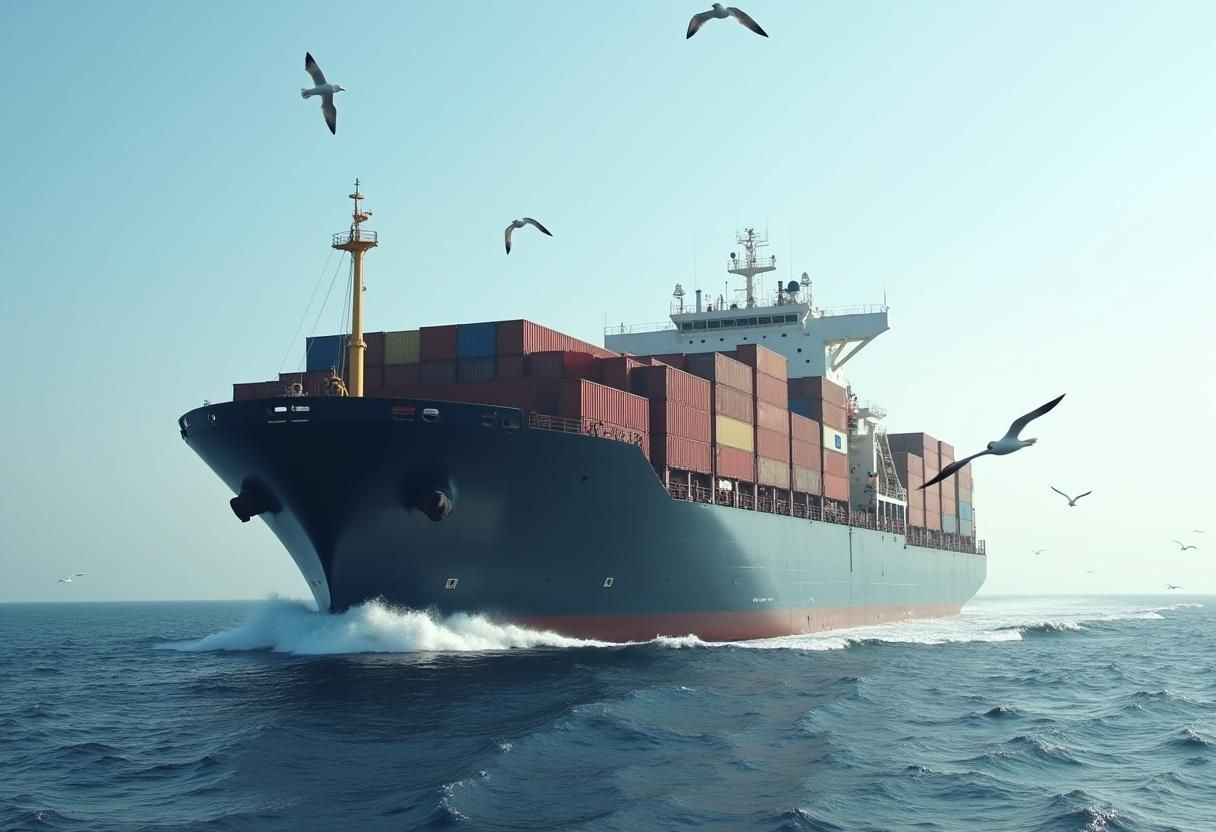Introduction
Sea freight shipping is the backbone of international trade, handling over 80% of global cargo transportation. Whether you’re an importer, exporter, or logistics company, understanding the ins and outs of sea freight is crucial for optimizing costs, ensuring timely deliveries, and staying competitive. In this guide, we’ll explore everything from the benefits of sea freight to shipping processes, key challenges, and expert tips to streamline your shipping operations.
What is Sea Freight Shipping?
Sea freight shipping, also known as ocean freight, is the process of transporting goods via ships across international waters. It is the most economical mode of transport for large and bulky shipments, providing an efficient and cost-effective alternative to air freight and land transportation.
Types of Sea Freight Shipping
- Full Container Load (FCL) – A single shipper uses an entire container for their cargo.
- Less than Container Load (LCL) – Cargo from multiple shippers is consolidated into a shared container.
- Roll-on/Roll-off (RoRo) – Used for vehicles and wheeled machinery that can be driven onto the ship.
- Breakbulk Shipping – Cargo is loaded individually rather than in containers, often used for oversized items.
Benefits of Sea Freight Shipping
1. Cost-Effectiveness
Compared to air freight, sea freight is significantly cheaper, especially for large-volume shipments. The cost per kilogram is much lower, making it ideal for businesses dealing in bulk goods.
2. High Capacity for Heavy and Large Cargo
Sea freight can accommodate massive quantities of goods, including heavy machinery, automobiles, and industrial equipment, which would be impractical to transport via air freight.
3. Eco-Friendly Shipping Option
Ships have a lower carbon footprint per ton of cargo transported compared to airplanes and trucks, making sea freight a more sustainable choice for businesses focused on reducing their environmental impact.
4. Global Reach
Ports are present in almost every country, enabling seamless global trade. Unlike air freight, which has limited cargo space, sea freight provides greater accessibility to remote locations.
The Sea Freight Shipping Process
Step 1: Booking and Documentation
- Identify the type of cargo and choose the most suitable shipping method (FCL or LCL).
- Obtain necessary documentation such as a Bill of Lading (BOL), commercial invoice, and packing list.
Step 2: Cargo Packing and Container Loading
- Properly package and label goods to comply with international shipping regulations.
- Load cargo into shipping containers, ensuring weight is evenly distributed to avoid damage.
Step 3: Customs Clearance and Shipping
- Work with freight forwarders or customs brokers to handle customs clearance.
- The shipment is loaded onto a vessel and departs for its destination.
Step 4: Arrival at Destination Port
- Cargo undergoes customs inspection and clearance at the receiving port.
- Import duties and taxes are assessed before goods can be released.
Step 5: Inland Transportation and Final Delivery
- Once cleared, goods are transported via trucks or trains to the final destination.
- Businesses can choose door-to-door delivery for added convenience.
Challenges in Sea Freight Shipping and How to Overcome Them
1. Delays Due to Weather and Port Congestion
- Solution: Work with reliable shipping carriers and monitor weather forecasts to plan shipments in advance.
2. Complex Customs Regulations
- Solution: Partner with an experienced customs broker to ensure compliance and avoid unexpected fines or delays.
3. Risk of Cargo Damage or Loss
- Solution: Invest in cargo insurance to protect against unforeseen damages.
- Use high-quality packaging to reduce the risk of damage.
4. High Freight Costs During Peak Seasons
- Solution: Plan shipments during off-peak seasons or book in advance to secure lower rates.
How to Choose the Right Sea Freight Forwarder
Key Factors to Consider:
- Experience and Industry Reputation – Look for a freight forwarder with a proven track record in handling international shipments.
- Global Network of Partners – Ensure they have strong relationships with shipping lines and customs authorities worldwide.
- Transparent Pricing – Avoid hidden fees by choosing a company that provides clear, upfront pricing.
- Technology Integration – A good freight forwarder should offer tracking and digital documentation for improved visibility.
Conclusion
Sea freight shipping remains an essential part of global trade, offering businesses a cost-effective and reliable way to move goods across borders. By understanding the shipping process, mitigating challenges, and partnering with the right freight forwarder, companies can optimize their logistics operations and improve supply chain efficiency.
Frequently Asked Questions (FAQs)
1. How long does sea freight shipping take?
Transit times vary based on distance and shipping routes. Typically, sea freight can take anywhere from 10 to 60 days, depending on the origin and destination.
2. What factors affect sea freight costs?
Freight rates are influenced by fuel prices, port charges, container availability, and peak seasons in global shipping.
3. Is sea freight shipping safe for fragile items?
Yes, but proper packaging and securing the cargo inside the container are crucial to prevent damage during transit.
4. Do I need insurance for sea freight shipments?
While not mandatory, cargo insurance is highly recommended to protect against loss, damage, or theft during transit.
5. What is the difference between FCL and LCL shipping?
- FCL (Full Container Load): A single shipper fills an entire container.
- LCL (Less than Container Load): Cargo from multiple shippers is consolidated into one container, which may result in longer delivery times due to extra handling.
By following best practices and staying informed about the latest industry trends, businesses can successfully navigate the world of sea freight shipping with confidence.
